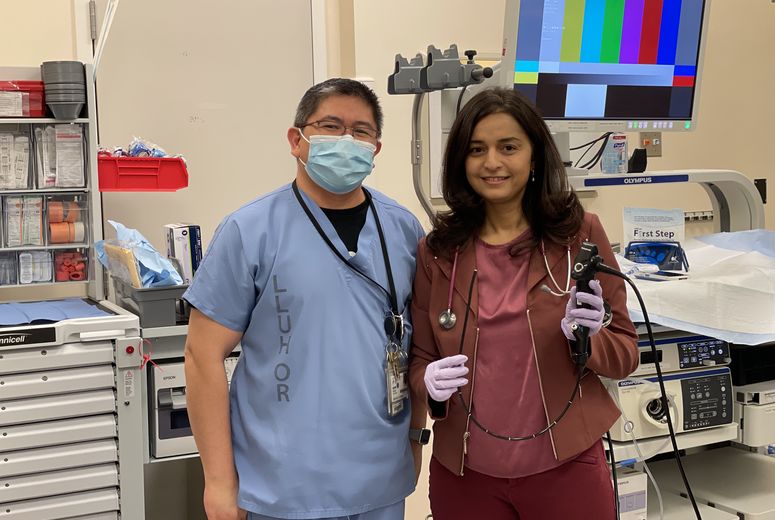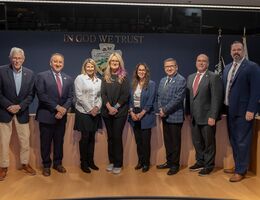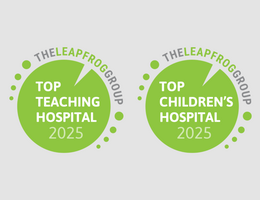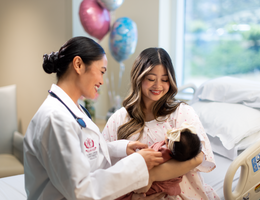
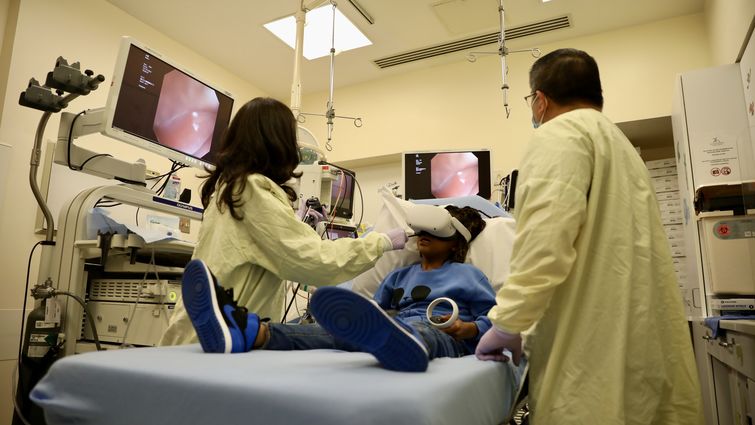
Jace Phillips, 9, in the GI lab with Dr. Khyati Mehta at Loma Linda University Children's Hospital
Loma Linda University Children's Hospital is one of only two children's hospitals in Southern California that have implemented transnasal endoscopy (TNE) procedures without sedation in children. Khyati Mehta, MD, the Pediatric GI lab director, and her team are transforming how gastrointestinal issues are diagnosed and treated in children.
An upper GI endoscopy with biopsy, known as EGD, usually necessitates deep sedation or general anesthesia. For this procedure, children need to fast for several hours beforehand and then spend additional time recovering from the anesthesia. This results in significant time away from school, a concern for children requiring multiple procedures to manage their gastrointestinal issues. In contrast, transnasal endoscopy can be performed while the child remains awake, offering a less disruptive alternative.
"Children walk into the procedure room and are usually out within an hour, including check-in and the procedure itself," Mehta said.
A numbing agent is used to numb the nose and throat. In collaboration with Tsungju O-Lee, MD, an Ear, Nose, Throat (ENT) physician, Mehta navigates the scope through the nasal passages, oral pharynx, esophagus, and stomach. Tiny tissue samples called biopsies can also be obtained during this procedure.
This technique is unique because it allows for all the capabilities of a traditional endoscopy, including performing biopsies, while the patient remains awake and can communicate. This is beneficial for children who need repeat endoscopies for conditions such as eosinophilic esophagitis (EoE). In EoE, children experience inflammation in the esophagus due to various foods, necessitating the elimination of these foods from their diet. They may require repeated esophageal examinations after reintroducing some of these foods.
Nine-year-old Jace Phillips was diagnosed with Eosinophilic Esophagitis (EoE) at age five. Mehta introduced Jace's mother, Tranell Martin, to transnasal endoscopy without sedation. Jace has since undergone this procedure twice and he and his mother feel it's the preferred alternative to the risks associated with anesthesia. During the process, the medical team's support and the use of a stress ball help Jace remain calm, and his mom can be in the room to offer support. Child Life specialists provide virtual reality goggles to watch movies or play games during the procedure.
Martin has described this sedation-free option as "life-changing." She appreciates that Jace can stay awake during the procedure and values being there to support him throughout.
"Jace has been my star patient, " Dr. Mehta said. "He's done two procedures without sedation, and we were able to obtain the biopsies and the pictures we needed. He's doing well!"
Jace's mother is trying to spread awareness about this less invasive option. She wants more families to know about the availability of transnasal endoscopy, especially for children like Jace who need frequent procedures.
To learn more about our services, click here.

